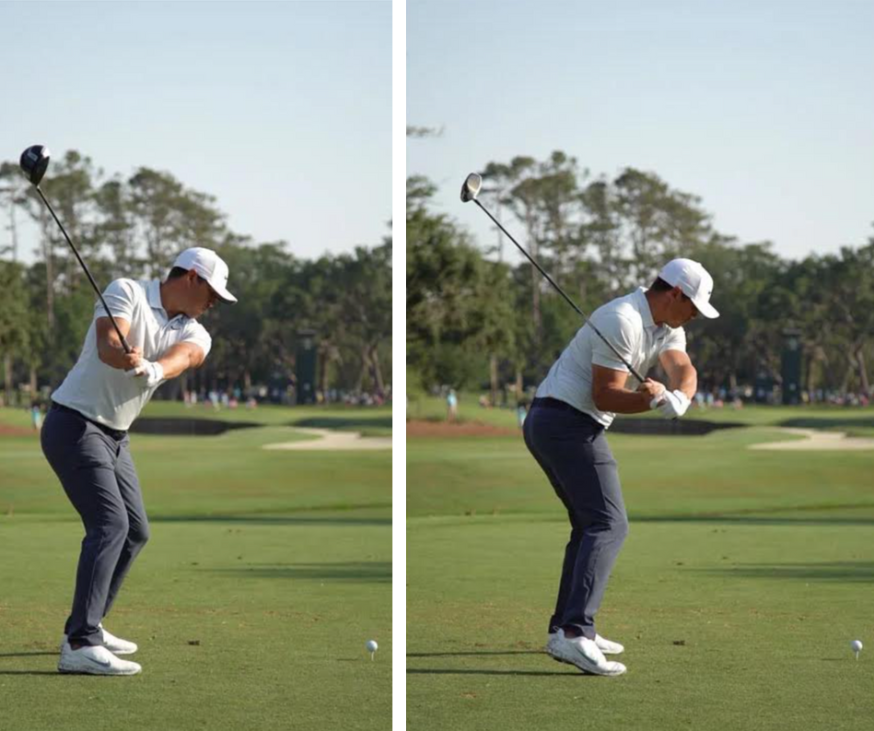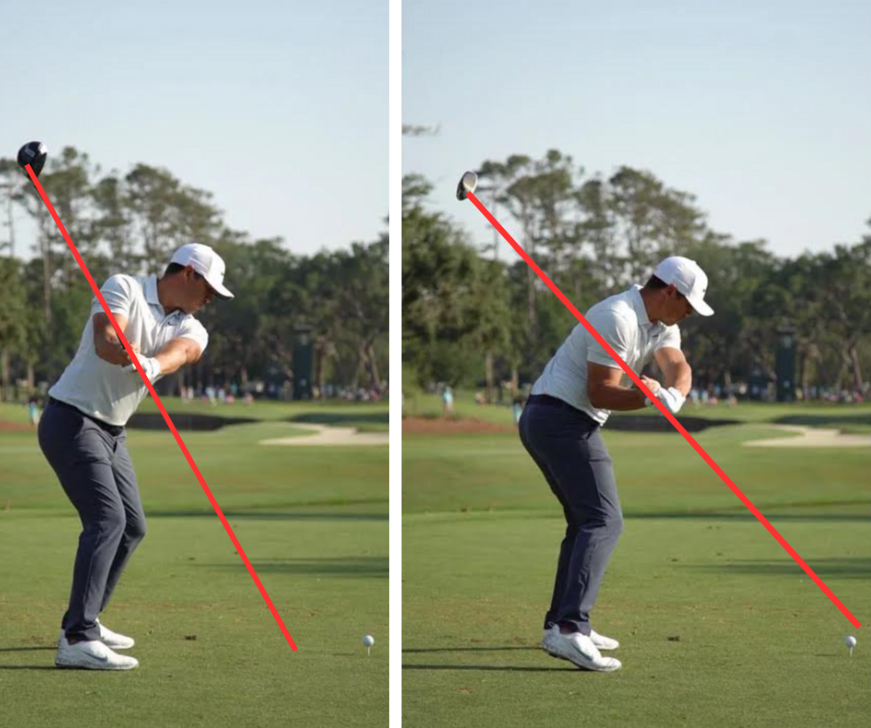In my January post, I talked about one of the crucial components that enhance accuracy. In this post, I will expound on another critical aspect of the swing that will help you find more fairways and greens.
I mentioned how important it is to swing on the correct path (inside – square – inside) relative to the target line, but another factor is controlling the proper “pitch” of the club. Pitch simply refers to the tilt of the club during the swing. During the move to the top, the pitch of the club is more toward vertical. In comparison, the pitch of the club is flatter on the downswing. The images below are Brooks Koepka with a driver and in his mid-backswing shaft “pitched” vertical and mid-downswing (top images) where the shaft is “pitched” flatter. In the (bottom images) I have added a line to reference the “pitch of the shaft related to the position of the ball. The image in the mid-backswing the line is pointed inside the ball and in the mid-downswing the line pointed just above, or outside the ball.


Brooks does so many good movements that contribute to his great ball striking ability and controlling the “pitch” of the club is one of his many attributes of his great swing.
This change in “pitch” of the club from the backswing to the downswing has been called many things in golf, from “flattening the shaft” to “shallowing the club.” Regardless of the choice of terms, it is a major contributor to a successful golf swing. This club movement begins as you arrive at the top of the backswing and continues early in the downswing. As with most critical movements in the golf swing “time matters” and the time when this club movement occurs is very important.
It ensures that the club will complete its journey to impact efficiently, automatically producing an inside path as well as helping to square the clubface.
To integrate the correct movement pattern and “pitch” of the club click on the link below to watch a demonstration of suggested drills you can work on at home or on the range.
